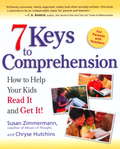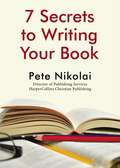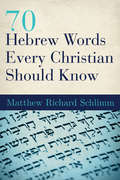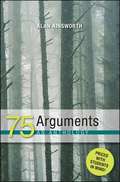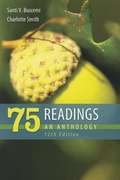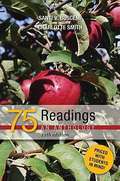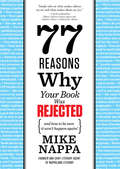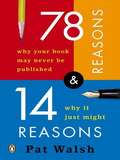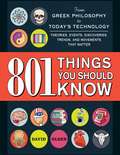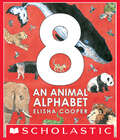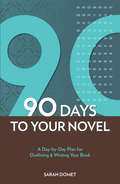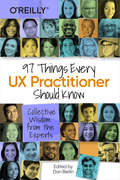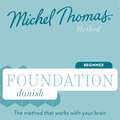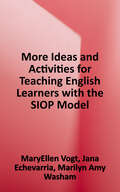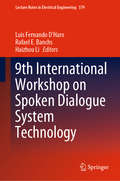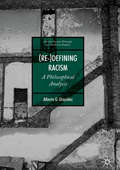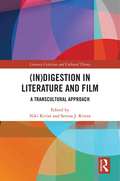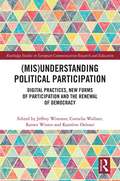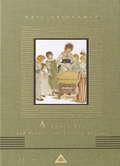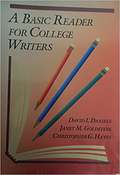- Table View
- List View
7 Keys to Comprehension: How to Help Your Kids Read It and Get It!
by Susan Zimmermann Chryse HutchinsIt's simple: If children don't understand what they read, they will never embrace reading. And that limits what they can learn while in school. This fact frightens parents, worries teachers, and ultimately hurts children. 7 Keys to Comprehension is the result of cutting-edge research. It gives parents and teachers--those who aren't already using this valuable program--practical, thoughtful advice about the seven simple thinking strategies that proficient readers use: * Connecting reading to their background knowledge * Creating sensory images * Asking questions * Drawing inferences * Determining what's important * Synthesizing ideas * Solving problems Easily understood, easily applied, and proven successful, this essential educational tool helps parents and teachers to turn reading into a fun and rewarding adventure.
7 Secrets to Writing Your Book
by Pete NikolaiHave you started writing a nonfiction book that you are struggling to finish? Do you have an idea for a book but don't know how to get started?Now you can start and finish your book sooner rather than later following an easy 7 step process that forms the foundation for the way many nonfiction books are written.This insider's guide starts by helping you find the time to write your book and then walks you through creating your book proposal, developing your writing plan, and writing your first draftAlong the way you'll determine when you could finish your book based on your personal writing output and the time you have available to write. You'll also discover the 7 secrets to finishing your book sooner rather than later including how to transform your dreams into your vision and how to establish the goals and action steps needed to make your vision a reality.Writing a book is similar to taking a journey. Having a plan and putting in the necessary time gets you from where you are to where you want to be. The 7 Secrets to Writing Your Book takes you step-by-step through the process of developing your plan and following through to write your book sooner rather than later.If you're ready to finish your book and to begin to see the impact it has in the lives of others, then read this quick guide and take the steps to make it happen!
70 Hebrew Words Every Christian Should Know
by Matthew Richard SchlimmThe basic message of the Bible can be understood in any language. At the same time, many biblical texts are hard to understand because they don’t quite make sense when translated into English. Something is missing. Quite frequently, what readers miss has been lost in translation. Maybe there is a pun or wordplay in the original. Sometimes names like Adam, Eve, Cain, Abel, and Eden just seem like names to us but have meanings that are essential to the story. Many Hebrew words have multiple meanings, but the English translators have to just pick one (for example, the same Hebrew word can mean both hear and obey). Even more common are Hebrew words that have much wider meanings than their English translations. A few examples are the Hebrew words rendered as remember, covenant, walk, gates, love, cleanliness, holiness, glory, wisdom, and fear. The original language allows various parts to click together like well-constructed puzzle pieces. With Hebrew in mind, interpreters see new details they didn’t realize were missing before. They make new connections. They immerse themselves in scripture more fully.That’s where this book comes in. Learning a language is like learning a worldview. Those who learn biblical Hebrew can better understand not only what biblical authors wrote, but also how they thought. Unfortunately, those insights come only after years of study. This book is about getting right to the important, exciting insights. It’s an opportunity to be transformed by the renewing of our minds as we better understand how biblical authors used their language to express their experience of God and the world.If you are just beginning to study Hebrew and want the insights and motivation to continue or if you have no intention of learning biblical Hebrew but want to better understand the Bible, this book is for you!
75 Arguments: An Anthology
by Alan AinsworthA collection of seventy-five extensively taught arguments--on national security, technology, marriage, race, economics, the environment, and globalization--is sure to engage students and inspire them to think critically and write well.
75 Readings: An Anthology
by Charlotte Smith Santi V. Buscemi75 Readings introduces students to a range of classic and contemporary essays. The text also exposes them to a variety of rhetorical strategies, writing styles, themes, and topics. At the same time, it retains maximum flexibility for the instructor. These essays provide good structural models for rhetorical techniques and raise complex questions about current and enduring issues.
75 Readings: An Anthology (Eleventh Edition)
by Charlotte Smith Santi V. Buscemi75 Readings offers an outstanding collection of the most popular essays for first-year writing. The readings represent a wide variety of authors, disciplines, issues, and interests.
77 Reasons Why Your Book Was Rejected
by Mike NappaA straightforward, practical reference for aspiring authors, 77 Reasons Why Your Book Was Rejected details the various reasons why editors and agents reject book ideas and pinpoints the mistakes that writers most often make in their proposals. This is an engaging resource for aspiring writers, delivering insider information on why editors and agents decline books and, more importantly, how to get them to stop passing on yours.
78 Reasons Why Your Book May Never Be Published and 14 Reasons Why It Just Might
by Pat WalshFor the hundreds of thousands who buy writers’ guides every year, at last there’s one that tells the ugly truth: writers who can’t get published are usually making a lot of mistakes. This honest, often funny, book shows them how to identify their own missteps, stop listening to bad advice, and get to work. Drawing on his experience as founding editor of MacAdam/Cage, Pat Walsh gives writers what they need—specific, straightforward feedback to help them overcome bad habits and bad luck. He avoids the optimistic, sometimes misleading directions often found in publishing how-to books and presents the industry as it is, warts and all. Here is the first guide that tells writers just what the odds against them are and gives them practical tips for evening them.
801 Things You Should Know
by David OlsenDiscover how the world's biggest ideas, inventions, and actions changed the course of history! What would life be like if the Age of Reason never challenged others to think differently, if the Industrial Revolution never happened, or if the New York Stock Exchange never came into existence? 801 Things You Should Know gives you the lowdown on thoughts and events that transformed past civilizations into the cultures that we know today. Each entry explains a game-changing concept or moment in time, detailing how it helped shape societies around the globe. You'll uncover fascinating details you'd never heard before, and be surprised to learn how these major influences have directly impacted the way you live. From the sixth century B.C. to the present day, you'll discover the captivating people, acts, and ideas that have inspired change--and revolutionized the world.
801 Things You Should Know
by David OlsenDiscover how the world's biggest ideas, inventions, and actions changed the course of history! What would life be like if the Age of Reason never challenged others to think differently, if the Industrial Revolution never happened, or if the New York Stock Exchange never came into existence? 801 Things You Should Know gives you the lowdown on thoughts and events that transformed past civilizations into the cultures that we know today. Each entry explains a game-changing concept or moment in time, detailing how it helped shape societies around the globe. You'll uncover fascinating details you'd never heard before, and be surprised to learn how these major influences have directly impacted the way you live. From the sixth century B.C. to the present day, you'll discover the captivating people, acts, and ideas that have inspired change--and revolutionized the world.
801 Things You Should Know: From Greek Philosophy to Today's Technology, Theories, Events, Discoveries, Trends, and Movements That Matter
by David OlsenDiscover how the world's biggest ideas, inventions, and actions changed the course of history!What would life be like if the Age of Reason never challenged others to think differently, if the Industrial Revolution never happened, or if the New York Stock Exchange never came into existence?801 Things You Should Know gives you the lowdown on thoughts and events that transformed past civilizations into the cultures that we know today. Each entry explains a game-changing concept or moment in time, detailing how it helped shape societies around the globe. You'll uncover fascinating details you'd never heard before, and be surprised to learn how these major influences have directly impacted the way you live.From the sixth century B.C. to the present day, you'll discover the captivating people, acts, and ideas that have inspired change--and revolutionized the world.
84 Charing Cross Road
by Helene HanffThis is a touching correspondence between Helene Hanff and the employees at a book shop on Charing Cross Road in London. It spans many years. Short but satisfying, this little book will warm your heart.
88 Money-Making Writing Jobs
by Robert Bly<p><i>THE BEST WAYS TO MAKE THOUSANDS OF DOLLARS WRITING!</i></p><p>Writers today are no longer just working on books and newspapers. Businesses, advertisers, and hundreds of other outlets are desperate for people who can craft effective messages and persuade people with their words. A strong writer can make $50 to $200 per hour, or even more. . . if you know where to find the work. </p><p>Robert Bly is a professional writer who makes more than $600,000 per year from his writing. Now, he's ready to share his secrets. <b>88 Money-Making Writing Jobs</b>presents the best outlets writers can find to turn their words into profit (including many that few people think to seek out). </p><ul><li>Along with an overview of each job, you'll discover:</li><li>A breakdown of what it typically pays</li><li>The nuts and bolts of what you'll write</li><li>What it takes to work in the field</li><li>How to get started</li><li>Resources for finding the work</li></ul><p>For anyone serious about a career as a writer, this guide offers the best information on how to make incredible money in ways that are fun, challenging, and make the most of your writing talents. </p>
8: An Animal Alphabet
by Mr. Elisha CooperExplore the animal world, from aardvark to zebu!Discover hundreds of animals, great and small. Lion and lizard, whale and wombat. Learn one wild fact about each animal. (Did you know that gorillas yawn when they are nervous?) Look carefully, because for each letter of the alphabet, one animal is pictured eight times. Why 8? Come inside and find out.
90 Days To Your Novel: A Day-by-Day Plan for Outlining & Writing Your Book
by Sarah DometGot 90 Days? Then You Can Be a Novelist Many famous authors write their novels in a matter of weeks. William Faulkner wrote As I Lay Dying in six weeks. Joyce Carol Oates often cranks out two or three books a year. Stephen King believes first drafts should take no more than three months to complete. So, what's the trick? Novel writing isn't about inspiration. It's about the time, energy, and discipline to see the project to its finish. With The 90-Day Novel at your side, now is the time. This inspiring guide will be your push, your deadline, and your spark to finally, without excuses, and in three short months, nail that first draft of your novel. The difference between wanna-be writers and real writers is the difference between talk and work. If you commit to the schedule and the techniques within The 90-Day Novel and invest two to three hours a day for twelve weeks, you will complete your book. An outline will appear. Characters will take shape. A plot will emerge. Scenes will come together and form a story worth reading. And then the talking can begin! This helpful guide provides:Instruction that distills the elements of the novel-from crafting your outline to developing intriguing characters and believable plots Strategies for gaining support from your family and friends Motivating insights about writing and writers to minimize your inevitable moments of doubt A schedule to keep you in the writing zone and keep you focused, creative, and working Whether you're writing your first novel or your third, this guide provides the coaching, the planning, and the writerly commiseration to help get your book written.
97 Things Every UX Practitioner Should Know
by Daniel BerlinTap into the wisdom of experts to learn what every UX practitioner needs to know. With 97 short and extremely useful articles, you'll discover new approaches to old problems, pick up road-tested best practices, and hone your skills through sound advice.Working in UX involves much more than just creating user interfaces. UX teams struggle with understanding what's important, which practices they should know deeply, and what approaches aren't helpful at all. With these 97 concise articles, editor Dan Berlin presents a wealth of advice and knowledge from experts who have practiced UX throughout their careers.Bring Themes to Exploratory Research--Shanti KanhaiDesign for Content First--Marli MesibovDesign for Universal Usability--Ann Chadwick-DiasBe Wrong on Purpose--Skyler Ray TaylorDiverse Participant Recruiting Is Critical to Authentic User Research--Megan CamposPut On Your InfoSec Hat to Improve Your Designs--Julie MeridianBoost Your Emotional Intelligence to Move from Good to Great UX--Priyama Barua
9781399815130 Foundation Danish (Michel Thomas Method) – Full course: 9781399815130 Foundation Danish (Michel Thomas Method) – Full course
by Anne Grydehoj'The thrill is that you're actually figuring it out on your own. You're engaging with another language, not just parroting it... It's an excellent way to start, and leaves the listener thinking, Hey, Ich kann do dis.' - New Yorker, David Sedaris, humorist and author, on learning German with the Michel Thomas MethodLooking for a convenient language course that fits your lifestyle and gets you speaking a new language in a matter of weeks, not years? The original no-books, no-homework, no-memorizing method is in tune with the way the brain prefers to receive, store and retrieve information. You'll stick with it because you'll love it.* Pick up Danish naturally and unforgettably without strain or stress* Learn from listening and speaking, without the pressure of writing or memorizing* Build up your Danish in manageable steps by thinking out answers for yourselfWHY IS THE METHOD SO SUCCESSFUL?'What you understand, you know; and what you know, you don't forget.' - Michel ThomasBefore there were algorithms, there was Michel Thomas. For over 50 years he worked on decoding languages by breaking them down into their most essential component parts. These 'building blocks' are introduced to the learner sequentially in such a way that you reconstruct the language for yourself - to form your own sentences, to say what you want, when you want. This unique method draws on the principles of instructional psychology and works with the way your brain prefers to receive, store and retrieve information. Knowledge is structured and organized so that you absorb the language easily and don't forget it. The method is designed to eliminate the stress which prevents you from relaxing and allowing the brain to work in the way which accepts learning in a seemingly painless, very exciting and highly motivating way.HOW DO THE COURSES WORK?'All stress inhibits true and effective learning' - Michel ThomasDuring the course, you will join Michel Thomas Method teacher Anne Grydehøj and two students in a live lesson, learning from both their successes and their mistakes to keep you motivated and involved throughout the course. You, as the learner, become the third student and participate actively in the class. Within the very first hour you will be able to construct simple phrases by listening and thinking out answers for yourself without the pressure of writing or stress of having to memorize. You will learn at your own pace, pausing and repeating where necessary, and complete the course in about 20-30 hours. By the end of the course, you will understand and have the confidence to speak basic Danish.WHAT WILL I ACTUALLY ACHIEVE?'I am the architect who builds the house. It's up to you to decorate it.' - Michel ThomasThe Michel Thomas Method will help you kick-start, continue, and flourish in your Danish language learning journey. It is not intended to get you perfectly fluent, but it will get you speaking and using Danish, with proper pronunciation, faster than any other method. It is designed to give you a strong foundation and good working knowledge of a language from which you can expand and later 'add decoration' to. It is a rapid method for learning, that requires only concentration on the part of the learner.LEARN ANYWHERE!Reclaim your pockets of free time to learn a new language! Don't be tied to chunky books or your computer, Michel Thomas Method audio courses let you learn whenever and wherever you want, in as little or as much time as you have.PLEASE NOTE: When you purchase this title, the accompanying PDF will be available in your Audible Library along with the audio.To find out more about the method, go to www.michelthomas.com(C) 1999 Thomas Keymaster Languages LLC.(P) 2024 Hodder & Stoughton, Ltd.All rights reserved.
99 More Ideas and Activities for Teaching English Learners with the SIOP Model (Siop Ser.)
by Jana Echevarria Maryellen Vogt Marilyn WashamThe SIOP ® model is proven to be one of the most effective methods of teaching our English learners. Now teaching with SIOP is even easier with the second volume of Vogt, Echevarria, and Washam's 99 MORE Ideas and Activities for Teaching English Learners with the SIOP ® Model. Offering brand new, classroom-ready activities, this indispensable resource revisits SIOP ® and shows how to use it each day in the classroom. Whether searching for activities that build vocabulary, keep students highly engaged, or make content concepts clear, these teacher-tested strategies adhere to SIOP ® principles and reinforce best practices. Chapters are organized around SIOP ®'s eight components and thirty features, so teachers learn not only what activities to try, but also why they work. With its dual focus on implementation and understanding, this must-have resource helps you create a classroom where students progress both academically and in their English language proficiency.
9th International Workshop on Spoken Dialogue System Technology (Lecture Notes in Electrical Engineering #579)
by Rafael E. Banchs Luis Fernando D’Haro Haizhou LiThis book presents the outcomes of the 9th International Workshop on Spoken Dialogue Systems (IWSDS), “Towards creating more human-like conversational agent technologies”. It compiles and provides a synopsis of current global research to push forward the state of the art in dialogue technologies, including advances in the context of the classical problems of language understanding, dialogue management and language generation, as well as cognitive topics related to the human nature of conversational phenomena, such as humor, empathy and social context understanding and awareness.
: A Philosophical Analysis (African American Philosophy and the African Diaspora)
by Alberto G. UrquidezWhat is racism? is a timely question that is hotly contested in the philosophy of race. Yet disagreement about racism’s nature does not begin in philosophy, but in the sociopolitical domain. Alberto G. Urquidez argues that philosophers of race have failed to pay sufficient attention to the practical considerations that prompt the question “What is racism?” Most theorists assume that “racism” signifies a language-independent phenomenon that needs to be “discovered” by the relevant science or “uncovered” by close scrutiny of everyday usage of this term. (Re-)Defining Racism challenges this metaphysical paradigm. Urquidez develops a Wittgenstein-inspired framework that illuminates the use of terms like “definition,” “meaning,” “explanation of meaning,” and “disagreement,” for the analysis of contested normative concepts. These elucidations reveal that providing a definition of “racism” amounts to recommending a form of moral representation—a rule for the correct use of “racism.” As definitional recommendations must be justified on pragmatic grounds, Urquidez takes as a starting point for justification the interests of racism's historical victims.
: A Transcultural Approach (Literary Criticism and Cultural Theory)
by Niki Kiviat(In)digestion in Literature and Film: A Transcultural Approach is a collection of essays spanning diverse geographic areas such as Brazil, Eastern Europe, France, Ireland, Italy, Japan, Mexico, South Korea, Taiwan and the United States. Despite this geographic variance, they all question disordered eating practices represented in literary and filmic works. The collection ultimately redefines disorder, removing the pathology and stigma assigned to acts of non-normative eating. In so doing, the essays deem taboo practices of food consumption, rejection and avoidance as expressions of resistance and defiance in the face of restrictive sociocultural, political, and economic normativities. As a result, disorder no longer equates to "out of order", implying a sense of brokenness, but is instead envisioned as an act against the dominant of order of operations. The collection therefore shifts critical focus from the eater as the embodiment of disorder to the problematic norms that defines behaviors as such.
: Digital Practices, New Forms of Participation and the Renewal of Democracy (Routledge Studies in European Communication Research and Education)
by Jeffrey Wimmer Cornelia Wallner Rainer Winter Karoline OelsnerThe practices of participation and engagement are characterised by complexities and contradictions. All celebratory examples of uses of social media, e.g. in the Arab spring, the Occupy movement or in recent LGBTQ protests, are deeply rooted in human practices. Because of this connection, every case of mediated participation should be perceived as highly contextual and cannot be attributed to one (social) specific media logic, necessitating detailed empirical studies to investigate the different contexts of political and civic engagement. In this volume, the theoretical chapters discuss analytical frameworks that can enrich our understanding of current contexts and practices of mediated participation. The empirical studies explore the implications of the new digital conditions for the ways in which digitally mediated social interactions, practices and environments shape everyday participation, engagement or protest and their subjective as well societal meaning.
: Essays on the Late Writings of Robert Duncan (Modern and Contemporary Poetry and Poetics)
by James MaynardThis collection of essays focuses on the remarkable late writings of Robert Duncan. Although praised by reviewers, Duncan's last two books of poetry have yet to receive the critical attention they merit. Written by a cast of emerging and established scholars, these essays bring together a diverse set of approaches to reading Duncan's writing.
A Apple Pie and Traditional Nursery Rhymes
by Kate GreenawayThis charming volume brings back into print some of the finest illustrated children's books from the Arts and Crafts Movement: Kate Greenaway's much-loved alphabet book, A Apple Pie, along with a selection of her illustrated nursery rhymes.Greenaway's drawings conjure up a never-never land of rural simplicity and innocence-an escape from the squalor of Victorian cities-that is as delightful now as it was when these gems of children's literature first appeared in the 1880s.
A Basic Reader for College Writers
by Janet M. Goldstein Christopher G. Hayes David I. DanielsAlthough this is designed to be a textbook, many readers will enjoy the essays, which are written by a range of authors that includes Jane Brody, John Kellmayer, Ben Fong-Torres, and Mary E. Mebane. The topics of these thirty-two essays cover throwing away food, overcoming alcoholism, learning from Japanese prisons, and baseball.
